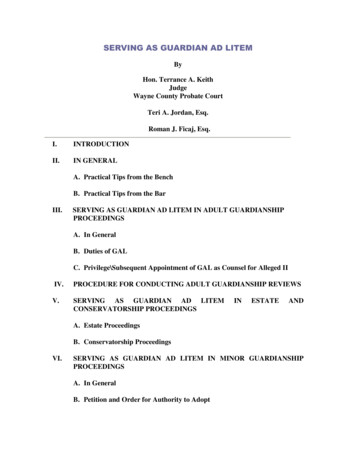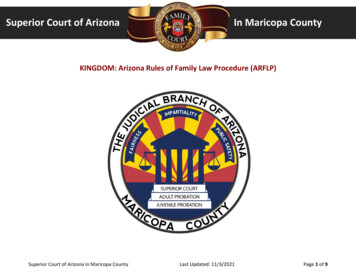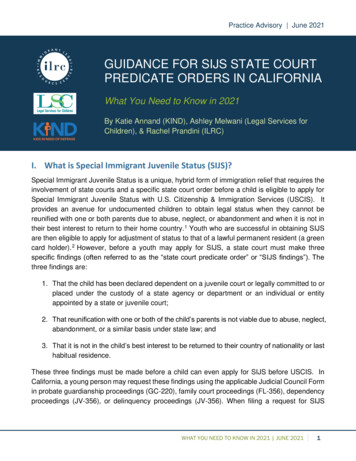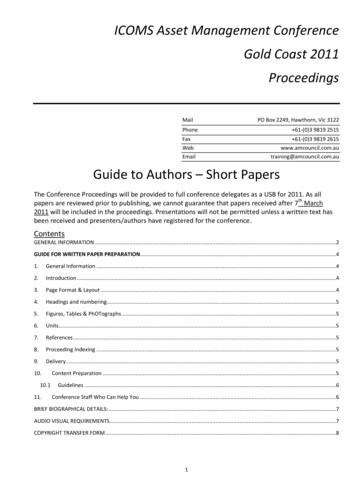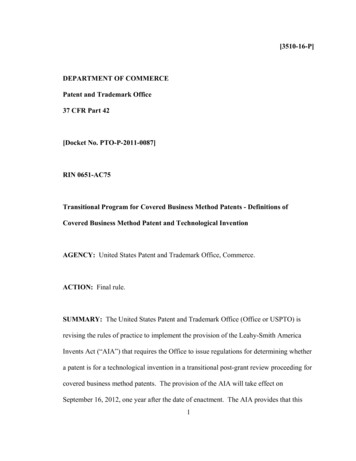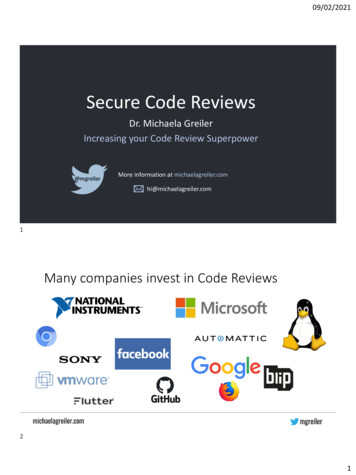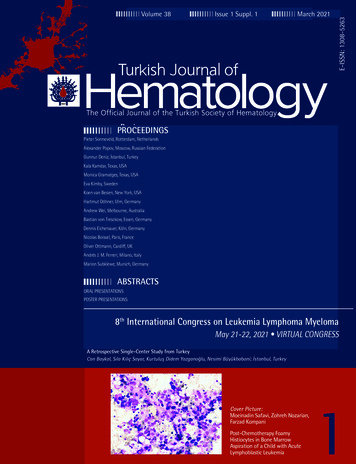
Transcription
IssueIssue1 Suppl.1 1MarchMarch2021 2021E-ISSN: 1308-5263Volume38 ,NetherlandsPrimaryImmuneRegulatoryDisorders and Targeted TherapiesBurcu Kolukısa,Safa Barış;AlexanderPopov, Moscow,Russianİstanbul,FederationTurkeyGunnur Deniz, İstanbul, TurkeyResearch ArticlesKala Kamdar, Texas, USAPrognosticValueTexas,of AntithrombinLevels in COVID-19 Patients and Impact of Fresh Frozen PlasmaMonicaGramatges,USATreatment: A Retrospective StudyEva Kimby, Swedenİlkay Anaklı, Perihan Ergin Özcan, Özlem Polat, Günseli Orhun, Gülçin Hilal Alay, Verda Tuna, Emre Çeliksoy,Mehmet Kılıç, Mutlu Mercan, Achmet Ali, Sevgi Beşışık, Figen Esen; İstanbul, TurkeyKoen van Besien, New York, USAHartmut Döhner, Ulm, GermanyCurrent Practice in FFP Preparation and Use in Greece: A National SerenaValsami, Abraham Pouliakis, Maria Gavalaki, Antonis Aggelidis, Vasiliki Voulgaridou,BastianvonPliatsika,Tresckow, TheofanisEssen, GermanyVasilikiAdraktas, Andreas Papachronis, Chrysoula Alepi, Vasiliki Giannopoulou,PanagiotisSiourounis,Sofia Tsagia, Georges Martinis, Eftihia Kontekaki, Eleftheria Zervou,DennisEichenauer,Köln, GermanySpiridon Koliofotis, Elias Kyriakou, Athina Mougiou, Lempousi Dimitra, Afrodite Chairopoulou,Aggeliki Tsakania, Maria Baka, Ioanna Apostolidou, Dimitra Moschandreou, Anastasia Livada, Marianna Politou,Oliver Ottmann, Cardiff, UKFragoula Roussinou, Christina Pappa, Vasiliki Koika, Niki Vgontza, Anthippi Gafou, Ioanna Dendrinou,AndrésM. Ferreri, Milano,ItalyFotiniJ. Sakellaridi,LampotheaLabrianou, Zafeiria Alexandropoulou, Vasiliki Sochali, Kostas Malekas,Areti Subklewe,Skordilaki,GeorgiaKakava, Konstantinos Lebesopoulos, Konstantinos Stamoulis, Elisavet Grouzi;MarionMunich,GermanyAthens, Thessaloniki, Piraeus, Alexandroupolis, Ioannina, Patras, GreeceNicolas Boissel, Paris, FranceEvaluation of PrognosticSignificance of the International Staging System According to Glomerular FiltrationABSTRACTSRate in Newly Diagnosed Multiple Myeloma Patients Eligible for Autologous Stem Cell TransplantationORAL PRESENTATIONSRafiye Çiftçiler, Hakan Göker, Haluk Demiroğlu, İbrahim Celalettin Haznedaroğlu, Nilgün Sayınalp, Salih Aksu,Osman Özcebe, Yahya Büyükaşık; Ankara, TurkeyPOSTER PRESENTATIONSOriginal Versus Generic Lenalidomide in Patients with Relapsed/Refractory Multiple Myeloma: Comparison ofth EventsEfficacy and Adverse8 International Congress on Leukemia Lymphoma MyelomaAli Zahit Bolaman, Atakan Turgutkaya, Birsen Sahip, Cem Selim, Hilal Eroğlu Küçükerdiler, Şehmus Ertop, GökhanSargın, İrfan Yavaşoğlu; Aydın, Zonguldak, TurkeyMay 21-22, 2021 VIRTUAL CONGRESSEvaluation of Associated Lymphomas and Their Risk Factors in Patients with Lymphomatoid Papulosis:A Retrospective Single-Center Study from TurkeyCan Baykal, Sıla Kılıç Sayar, Kurtuluş Didem Yazganoğlu, Nesimi Büyükbabani; İstanbul, TurkeyCover Picture:Moeinadin Safavi, Zohreh Nozarian,Farzad KompaniPost-Chemotherapy FoamyHistiocytes in Bone MarrowAspiration of a Child with AcuteLymphoblastic Leukemia1
International Review BoardEditor-in-ChiefNejat AkarGörgün AkpekSerhan AlkanÇiğdem AltayKoen van BesienM. Sıraç DilberAhmet DoğanPeter DregerThierry FaconJawed FareedGösta GahrtonDieter HoelzerMarilyn Manco-JohnsonAndreas JostingEmin KansuWinfried KernNigel KeyKorgün KoralAbdullah KutlarLuca MalcovatiRobert MarcusJean Pierre MarieGhulam MuftiGerassimos A. PangalisAntonio PigaAnanda PrasadJacob M. RoweJens-Ulrich RüfferNorbert SchmitzOrhan SezerAnna SuredaAyalew TefferiNükhet TüzünerCatherine VerfaillieSrdan VerstovsekClaudio ViscoliReyhan Küçükkayaİstanbul, Turkeyrkucukkaya@hotmail.comAssociate EditorsA. Emre Eşkazanİstanbul University-Cerrahpaşa, İstanbul, Turkeyemre.eskazan@istanbul.edu.trAli İrfan Emre TekgündüzMemorial Bahçelievler Hospital, İstanbul, Turkeyemretekgunduz@yahoo.comAyşegül Ünüvarİstanbul University, İstanbul, Turkeyaysegulu@hotmail.comCengiz BeyanAnkara, Turkeycengizbeyan@hotmail.comHale ÖrenDokuz Eylül University, İzmir, Turkeyhale.oren@deu.edu.trİbrahim C. HaznedaroğluHacettepe University, Ankara, Turkeyhaznedar@yahoo.comSelami Koçak ToprakAnkara University, Ankara, Turkeysktoprak@yahoo.comSemra PaydaşÇukurova University, Adana, Turkeysepay@cu.edu.trŞule ÜnalHacettepe University, Ankara, Turkeysuleunal2003@hotmail.comAssistant EditorsClaudio CerchioneUniversity of Naples Federico II Napoli,Campania, ItalyEbru KocaBaşkent University Ankara Hospital,Clinic of Hematology, Ankara, TurkeyElif Ünal İnceAnkara University, Ankara, TurkeyTOBB University of Economics and Technology Hospital, Ankara, TurkeyMaryland School of Medicine, Baltimore, USACedars-Sinai Medical Center, Los Angeles, USAAnkara, TurkeyWeill Cornell Medicine, New York, USAKarolinska University, Stockholm, SwedenMemorial Sloan Kettering Cancer Center, New York, USAHeidelberg University, Heidelberg, GermanyLille University, Lille, FranceLoyola University, Maywood, USAKarolinska University Hospital, Stockholm, SwedenFrankfurt University, Frankfurt, GermanyUniversity of Colorado Anschutz Medical Campus, Aurora, USAUniversity Hospital Cologne, Cologne, GermanyHacettepe University, Ankara, TurkeyAlbert Ludwigs University, Freiburg im Breisgau, GermanyUniversity of North Carolina School of Medicine, NC, USASouthwestern Medical Center, Texas, USAMedical College of Georgia at Augusta University, Augusta, USAPavia Medical School University, Pavia, ItalyKings College Hospital, London, UKPierre et Marie Curie University, Paris, FranceKing’s Hospital, London, UKAthens University, Athens, GreeceTorino University, Torino, ItalyWayne State University School of Medicine, Detroit, USAHebrew University of Jerusalem, Jerusalem, IsraelUniversity of Köln, Köln, GermanyAK St Georg, Hamburg, GermanyCharité Comprehensive Cancer Center, Berlin, GermanySanta Creu i Sant Pau Hospital, Barcelona, SpainMayo Clinic, Rochester, Minnesota, USAİstanbul Cerrahpaşa University, İstanbul, TurkeyKatholieke Universiteit Leuven, Leuven, BelgiumThe University of Texas MD Anderson Cancer Center, Houston, USASan Martino University, Genoa, Italyİnci AlacacıoğluDokuz Eylül University, İzmir, TurkeyMario TiribelliUniversity of Udine, Udine, ItalyMüge Sayitoğluİstanbul University, İstanbul, TurkeyNil GülerOndokuz Mayıs University, Samsun, TurkeyOlga Meltem AkayKoç University, İstanbul, TurkeyVeysel Sabri Hançerİstinye University, İstanbul, TurkeyZühre KayaGazi University, Ankara, TurkeyPast EditorsErich FrankOrhan UlutinHamdi AkanAytemiz GürgeyLanguage EditorLeslie DemirSenior Advisory BoardYücel TangünOsman İlhanMuhit ÖzcanTeoman SoysalAhmet Muzaffer DemirEditorial Officeİpek DurusuBengü Timoçin EfeStatistic EditorHülya GALENOSAraştırmalarBasın Yayın ve Tanıtım Ltd. : 21/1, Fındıkzade, İstanbul, TurkeyServicesZiya Gökalp Cad. 30/31,06420Kızılay,Phone: 9062212621 031299 25431 Fax:621 99 27 www.galenos.com.trServicesTel: 0312431 30 Faks:36 9002 212www.bayt.com.tr info@bayt.com.tr
Contact InformationEditorial Correspondence should be addressed to Dr. Reyhan KüçükkayaE-mail : rkucukkaya@hotmail.comAll Inquiries Should be Addressed toTURKISH JOURNAL OF HEMATOLOGYAddressPhoneFaxE-mail: Turan Güneş Bulv. İlkbahar Mah. Fahreddin Paşa Sokağı (eski 613. Sok.) No: 8 06550 Çankaya, Ankara / Turkey: 90 312 490 98 97: 90 312 490 98 68: tjh@tjh.com.trE-ISSN: 1308-5263Digital PublishingPublishing ManagerPublishing HouseBAYTMolla Gürani Mah. Kaçamak Sk. No: 21,BilimselAraştırmalarBasın/Yayın34093 Fındıkzade,İstanbulTurkeyve Tanıtım Ltd. Şti.Muhlis Cem ArManagement AddressTuran Güneş Bulv. İlkbahar Mah. Fahreddin Paşa Sokağı (eski 613. Sok.)No: 8 06550 Çankaya, Ankara / TurkeyTel: Gökalp 90 212Cad.621 9925 06420 Kızılay, AnkaraZiya30/31,Fax:0312 90 431212 306216299 27Tel:Faks: 0312 431 36 02 .com.trPublisher Certificate Number: 14521Online Manuscript SubmissionPublicationDatePublicationDateTürk Hematoloji 202124.02.2021Web n zarian,Nozarian,FarzadKompaniOwner on Behalf of the Turkish Societyof HematologySmearsshowedshowed multiplehistiocytes(A, (A,B). B).SmearsmultiplefoamyfoamyhistiocytesGüner Hayri ÖzsanPost-Chemotherapy FoamyHistiocytesin BoneMarrowPost-ChemotherapyFoamyHistiocytesin BoneMarrow Leukemiaof a Child with Acute Lymphoblastic LeukemiaInternational scientific journal published quarterly.The Turkish Journal of Hematology is published by the commercial enterpriseof the Turkish Society of Hematology with Decision Number 6 issued by theSociety on 7 October 2008.A-II8th International Congress on Leukemia Lymphoma MyelomaIIMay 21-22, 2021 VIRTUAL CONGRESS
AIMS AND SCOPEThe Turkish Journal of Hematology is published quarterly (March, June,September, and December) by the Turkish Society of Hematology. It is anindependent, non-profit peer-reviewed international English-languageperiodical encompassing subjects relevant to hematology.The Editorial Board of The Turkish Journal of Hematology adheres to theprinciples of the World Association of Medical Editors (WAME), InternationalCouncil of Medical Journal Editors (ICMJE), Committee on PublicationEthics (COPE), Consolidated Standards of Reporting Trials (CONSORT) andStrengthening the Reporting of Observational Studies in Epidemiology(STROBE).The aim of The Turkish Journal of Hematology is to publish originalhematological research of the highest scientific quality and clinical relevance.Additionally, educational material, reviews on basic developments, editorialshort notes, images in hematology, and letters from hematology specialistsand clinicians covering their experience and comments on hematology andrelated medical fields as well as social subjects are published. As of December2015, The Turkish Journal of Hematology does not accept case reports.Important new findings or data about interesting hematological cases maybe submitted as a brief report.General practitioners interested in hematology and internal medicinespecialists are among our target audience, and The Turkish Journal ofHematology aims to publish according to their needs. The Turkish Journal ofHematology is indexed, as follows:- PubMed Medline- PubMed Central- Science Citation Index Expanded- EMBASE- Scopus- CINAHL- Gale/Cengage Learning- EBSCO- DOAJ- ProQuest- Index Copernicus- Tübitak/Ulakbim Turkish Medical Database- Turk Medline- Hinari- GOALI- ARDI- OAREImpact Factor: 1.685Open Access PolicyTurkish Journal of Hematology is an Open Access journal. This journalprovides immediate open access to its content on the principle that makingresearch freely available to the public supports a greater global exchange ofknowledge.Open Access Policy is based on the rules of the Budapest Open AccessInitiative (BOAI) ription InformationThe Turkish Journal of Hematology is published electronically only as of2019. Therefore, subscriptions are not necessary. All published volumes areavailable in full text free-of-charge online at www.tjh.com.tr.A-IIIAddress: Turan Güneş Bulv. İlkbahar Mah. Fahreddin Paşa Sokağı (eski 613.Sok.) No: 8 06550 Çankaya, Ankara / TurkeyTelephone: 90 312 490 98 97Fax: 90 312 490 98 68Online Manuscript Submission: http://mc.manuscriptcentral.com/tjhWeb page: www.tjh.com.trE-mail: tjh@tjh.com.trPermissionsRequests for permission to reproduce published material should be sent tothe editorial office.Editor: Professor Dr. Reyhan KüçükkayaAdress: Turan Güneş Bulv. İlkbahar Mah. Fahreddin Paşa Sokağı (eski 613.Sok.) No: 8 06550 Çankaya, Ankara / TurkeyTelephone: 90 312 490 98 97Fax: 90 312 490 98 68Online Manuscript Submission: http://mc.manuscriptcentral.com/tjhWeb page: www.tjh.com.trE-mail: tjh@tjh.com.trPublisherGalenos YayıneviMolla Gürani Mah. Kaçamak Sk. No:21 34093 Fındıkzade-İstanbul, TurkeyTelephone : 90 212 621 99 25Fax: 90 212 621 99 27info@galenos.com.trInstructions for AuthorsInstructions for authors are published in the journal and at www.tjh.com.trMaterial DisclaimerAuthors are responsible for the manuscripts they publish in The TurkishJournal of Hematology. The editor, editorial board, and publisher do notaccept any responsibility for published manuscripts.If you use a table or figure (or some data in a table or figure) from anothersource, cite the source directly in the figure or table legend.Editorial PolicyFollowing receipt of each manuscript, a checklist is completed by the EditorialAssistant. The Editorial Assistant checks that each manuscript contains allrequired components and adheres to the author guidelines, after which timeit will be forwarded to the Editor in Chief. Following the Editor in Chief’sevaluation, each manuscript is forwarded to the Associate Editor, who inturn assigns reviewers. Generally, all manuscripts will be reviewed by at leastthree reviewers selected by the Associate Editor, based on their relevantexpertise. Associate editor could be assigned as a reviewer along with thereviewers. After the reviewing process, all manuscripts are evaluated in theEditorial Board Meeting.Turkish Journal of Hematology’s editor and Editorial Board members are activeresearchers. It is possible that they would desire to submit their manuscriptto the Turkish Journal of Hematology. This may be creating a conflict ofinterest. These manuscripts will not be evaluated by the submitting editor(s).The review process will be managed and decisions made by editor-in-chiefwho will act independently. In some situation, this process will be overseenby an outside independent expert in reviewing submissions from editors.8th International Congress on Leukemia Lymphoma MyelomaIIIMay 21-22, 2021 VIRTUAL CONGRESS
TURKISH JOURNAL OF HEMATOLOGYINSTRUCTIONS FOR AUTHORSThe Turkish Journal of Hematology accepts invited review articles,research articles, brief reports, letters to the editor, and hematologicalimages that are relevant to the scope of hematology, on the conditionthat they have not been previously published elsewhere. Basic sciencemanuscripts, such as randomized, cohort, cross-sectional, and casecontrol studies, are given preference. All manuscripts are subjectto editorial revision to ensure they conform to the style adopted bythe journal. There is a double-blind reviewing system. Review articlesare solicited by the Editor-in-Chief. Authors wishing to submit anunsolicited review article should contact the Editor-in-Chief prior tosubmission in order to screen the proposed topic for relevance andpriority.The Turkish Journal of Hematology does not charge any articlesubmission or processing charges.Manuscripts should be prepared according to ICMJE guidelines (http://www.icmje.org/). Original manuscripts require a structured abstract.Label each section of the structured abstract with the appropriatesubheading (Objective, Materials and Methods, Results, and Conclusion).Letters to the editor do not require an abstract. Research or projectsupport should be acknowledged as a footnote on the title page.Technical and other assistance should be provided on the title page.Original ManuscriptsTitle PageTitle: The title should provide important information regarding themanuscript’s content. The title must specify that the study is a cohortstudy, cross-sectional study, case-control study, or randomized study (i.e.Cao GY, Li KX, Jin PF, Yue XY, Yang C, Hu X. Comparative bioavailabilityof ferrous succinate tablet formulations without correction for baselinecircadian changes in iron concentration in healthy Chinese malesubjects: A single-dose, randomized, 2-period crossover study. Clin Ther2011;33:2054-2059).The title page should include the authors’ names, degrees, andinstitutional/professional affiliations and a short title, abbreviations,keywords, financial disclosure statement, and conflict of intereststatement. If a manuscript includes authors from more than oneinstitution, each author’s name should be followed by a superscriptnumber that corresponds to their institution, which is listed separately.Please provide contact information for the corresponding author,including name, e-mail address, and telephone and fax numbers.Important Notice: The title page should be submitted separately.Running Head: The running head should not be more than 40characters, including spaces, and should be located at the bottom ofthe title page.A-IVWord Count: A word count for the manuscript, excluding abstract,acknowledgments, figure and table legends, and references, should beprovided and should not exceed 2500 words. The word count for theabstract should not exceed 300 words.Conflict of Interest Statement: To prevent potential conflicts ofinterest from being overlooked, this statement must be included in eachmanuscript. In case there are conflicts of interest, every author shouldcomplete the ICMJE general declaration form, which can be obtained athttp://www.icmje.org/downloads/coi disclosure.zipAbstract and Keywords: The second page should include an abstractthat does not exceed 300 words. For manuscripts sent by authors inTurkey, a title and abstract in Turkish are also required. As most readersread the abstract first, it is critically important. Moreover, as variouselectronic databases integrate only abstracts into their index, importantfindings should be presented in the abstract.Objective: The abstract should state the objective (the purpose of thestudy and hypothesis) and summarize the rationale for the study.Materials and Methods: Important methods should be writtenrespectively.Results: Important findings and results should be provided here.Conclusion: The study’s new and important findings should behighlighted and interpreted.Other types of manuscripts, such as reviews, brief reports, andeditorials, will be published according to uniform requirements.Provide 3-10 keywords below the abstract to assist indexers. Useterms from the Index Medicus Medical Subject Headings List(for randomized studies a CONSORT abstract should be provided: http://www.consort-statement.org).Introduction: The introduction should include an overview of therelevant literature presented in summary form (one page), and whateverremains interesting, unique, problematic, relevant, or unknown aboutthe topic must be specified. The introduction should conclude with therationale for the study, its design, and its objective(s).Materials and Methods: Clearly describe the selection of observationalor experimental participants, such as patients, laboratory animals, andcontrols, including inclusion and exclusion criteria and a description ofthe source population. Identify the methods and procedures in sufficientdetail to allow other researchers to reproduce your results. Providereferences to established methods (including statistical methods),provide references to brief modified methods, and provide the rationalefor using them and an evaluation of their limitations. Identify all drugsand chemicals used, including generic names, doses, and routes ofadministration. The section should include only information that wasavailable at the time the plan or protocol for the study was devised8th International Congress on Leukemia Lymphoma MyelomaIVMay 21-22, 2021 VIRTUAL CONGRESS
/uploads/checklists/STROBE checklist v4 combined.pdf).Statistics: Describe the statistical methods used in enough detail toenable a knowledgeable reader with access to the original data to verifythe reported results. Statistically important data should be given in thetext, tables, and figures. Provide details about randomization, describetreatment complications, provide the number of observations, and specifyall computer programs used.Results: Present your results in logical sequence in the text, tables, andfigures. Do not present all the data provided in the tables and/or figuresin the text; emphasize and/or summarize only important findings, results,and observations in the text. For clinical studies provide the number ofsamples, cases, and controls included in the study. Discrepancies betweenthe planned number and obtained number of participants should beexplained. Comparisons and statistically important values (i.e. p-valueand confidence interval) should be provided.Discussion: This section should include a discussion of the data. New andimportant findings/results and the conclusions they lead to should beemphasized. Link the conclusions with the goals of the study, but avoidunqualified statements and conclusions not completely supported by thedata. Do not repeat the findings/results in detail; important findings/resultsshould be compared with those of similar studies in the literature, along witha summarization. In other words, similarities or differences in the obtainedfindings/results with those previously reported should be discussed.Study Limitations: Limitations of the study should be detailed. Inaddition, an evaluation of the implications of the obtained findings/results for future research should be outlined.Conclusion: The conclusion of the study should be highlighted.ReferencesCite references in the text, tables, and figures with numbers in squarebrackets. Number references consecutively according to the order inwhich they first appear in the text. Journal titles should be abbreviatedaccording to the style used in Index Medicus (consult List of JournalsIndexed in Index Medicus). Include among the references any paperaccepted, but not yet published, designating the journal followed by “inpress”.Examples of References:1. List all authorsDeeg HJ, O’Donnel M, Tolar J. Optimization of conditioning for marrowtransplantation from unrelated donors for patients with aplastic anemiaafter failure of immunosuppressive therapy. Blood 2006;108:1485-1491.2. Organization as authorRoyal Marsden Hospital Bone Marrow Transplantation Team. Failure ofsyngeneic bone marrow graft without preconditioning in post-hepatitismarrow aplasia. Lancet 1977;2:742-744.3. BookWintrobe MM. Clinical Hematology, 5th ed. Philadelphia, Lea & Febiger, 1961.A-V4. Book ChapterPerutz MF. Molecular anatomy and physiology of hemoglobin. In:Steinberg MH, Forget BG, Higs DR, Nagel RI, (eds). Disorders of Hemoglobin:Genetics, Pathophysiology, Clinical Management. New York, CambridgeUniversity Press, 2000.5. AbstractDrachman JG, Griffin JH, Kaushansky K. The c-Mpl ligand (thrombopoietin)stimulates tyrosine phosphorylation. Blood 1994;84:390a (abstract).6. Letter to the EditorRao PN, Hayworth HR, Carroll AJ, Bowden DW, Pettenati MJ. Furtherdefinition of 20q deletion in myeloid leukemia using fluorescence in situhybridization. Blood 1994;84:2821-2823.7. SupplementAlter BP. Fanconi’s anemia, transplantation, and cancer. Pediatr Transplant2005;9(Suppl 7):81-86.Brief ReportsAbstract length: Not to exceed 150 words.Article length: Not to exceed 1200 words.Introduction: State the purpose and summarize the rationale for the study.Materials and Methods: Clearly describe the selection of the observationalor experimental participants. Identify the methods and procedures insufficient detail. Provide references to established methods (includingstatistical methods), provide references to brief modified methods, andprovide the rationale for their use and an evaluation of their limitations.Identify all drugs and chemicals used, including generic names, doses, androutes of administration.Statistics: Describe the statistical methods used in enough detail toenable a knowledgeable reader with access to the original data to verifythe reported findings/results. Provide details about randomization,describe treatment complications, provide the number of observations,and specify all computer programs used.Results: Present the findings/results in a logical sequence in the text, tables,and figures. Do not repeat all the findings/results in the tables and figures inthe text; emphasize and/or summarize only those that are most important.Discussion: Highlight the new and important findings/results of thestudy and the conclusions they lead to. Link the conclusions with thegoals of the study, but avoid unqualified statements and conclusions notcompletely supported by your data.Invited Review ArticlesAbstract length: Not to exceed 300 words.Article length: Not to exceed 4000 words.Review articles should not include more than 100 references. Reviewsshould include a conclusion, in which a new hypothesis or study about thesubject may be posited. Do not publish methods for literature search or levelof evidence. Authors who will prepare review articles should already havepublished research articles on the relevant subject. The study’s new and8th International Congress on Leukemia Lymphoma MyelomaVMay 21-22, 2021 VIRTUAL CONGRESS
important findings should be highlighted and interpreted in the Conclusionsection. There should be a maximum of two authors for review articles.Perspectives in Hematology“Perspectives” are articles discussing significant topics relevant tohematology. They are more personal than a Review Article. Authorswishing to submit a Perspective in Hematology article should contactthe Editor in Chief prior to submission in order to screen the proposedtopic for relevance and priority. Articles submitted for “Perspectivesin Hematology” must advance the hot subjects of experimental and/or clinical hematology beyond the articles previously published or inpress in TJH. Perspective papers should meet the restrictive criteria ofTJH regarding unique scientific and/or educational value, which willimpact and enhance clinical hematology practice or the diagnosticunderstanding of blood diseases. Priority will be assigned to suchmanuscripts based upon the prominence, significance, and timeliness ofthe content. The submitting author must already be an expert with arecognized significant published scientific experience in the specific fieldrelated to the “Perspectives” article.Each figure should be accompanied by a legend that does not exceed50 words. Use abbreviations only if they have been introduced in thetext. Authors are also required to provide the level of magnification forhistological slides. Explain the internal scale and identify the stainingmethod used. Figures should be submitted as separate files, not inthe text file. High-resolution image files are not preferred for initialsubmission as the file sizes may be too large. The total file size of thePDF for peer review should not exceed 5 MB.AuthorshipEach author should have participated sufficiently in the work to assumepublic responsibility for the content. Any portion of a manuscript that iscritical to its main conclusions must be the responsibility of at least oneauthor.Contributor’s StatementArticle length: Not to exceed 1000 words.All submissions should contain a contributor’s statement page. Eachstatement should contain substantial contributions to idea and design,acquisition of data, and analysis and interpretation of findings. All personsdesignated as an author should qualify for authorship, and all those thatqualify should be listed. Each author should have participated sufficientlyin the work to take responsibility for appropriate portions of the text.References: Should not include more than 50 referencesAcknowledgmentsImages in HematologyAcknowledge support received from individuals, organizations, grants,corporations, and any other source. For work involving a biomedicalproduct or potential product partially or wholly supported by corporatefunding, a note stating, “This study was financially supported (in part)with funds provided by (company name) to (authors’ initials)”, mustbe included. Grant support, if received, needs to be stated and thespecific granting institutions’ names and grant numbers provided whenapplicable.Abstract length: Not to exceed 150 words.Article length: Not to exceed 200 words.Authors can submit for consideration illustrations or photos that areinteresting, instructive, and visually attractive, along with a few linesof explanatory text and references. Images in Hematology can includeno more than 200 words of text, 5 references, and 3 figures or tables.No abstract, discussion, or conclusion is required, but please include abrief title.Letters to the EditorArticle length: Not to exceed 500 words.Letters can include no more than 500 words of text, 5-10 references,and 1 figure or table. No abstract is required, but please include a brieftitle. The total number is usually limited to a maximum of five authorsfor a letter to the editor.TablesSupply each table in a separate file. Number tables according to the orderin which they appear in the text, and supply a brief caption for each.Give each column a short or abbreviated heading. Write explanatorystatistical measures of variation, such as standard deviation or standarderror of mean. Be sure that each table is cited in the text.FiguresFigures should be professionally drawn and/or photographed. Authorsshould number figures according to the order in which they appear inthe text. Figures include graphs, charts, photographs, and illustrations.A-VIAuthors are expected to disclose on the title page any commercial orother associations that might pose a conflict of interest in connectionwith the submitted manuscript. All funding sources that supported thework and the institutional and/or corporate affiliations of the authorsshould be acknowledged on the title page.EthicsWhen reporting experiments conducted with humans indicate thatthe procedures were in accordance with ethical standards set forthby the committee that oversees human subject research. Approval ofresearch protocols by the relevant ethics committee, in accordance withinternational agreements (Helsinki Declaration of 1975, revised 2013a
Mayo Clinic, Rochester, Minnesota, USA İstanbul Cerrahpaşa University, İstanbul, Turkey Katholieke Universiteit Leuven, Leuven, Belgium The University of Texas MD Anderson Cancer Center, Houston, USA San Martino University, Genoa, Italy Past Editors Erich Frank Orhan Ulutin Hamdi Akan Aytemiz Gürgey Senior Advisory Board Yücel Tangün .


